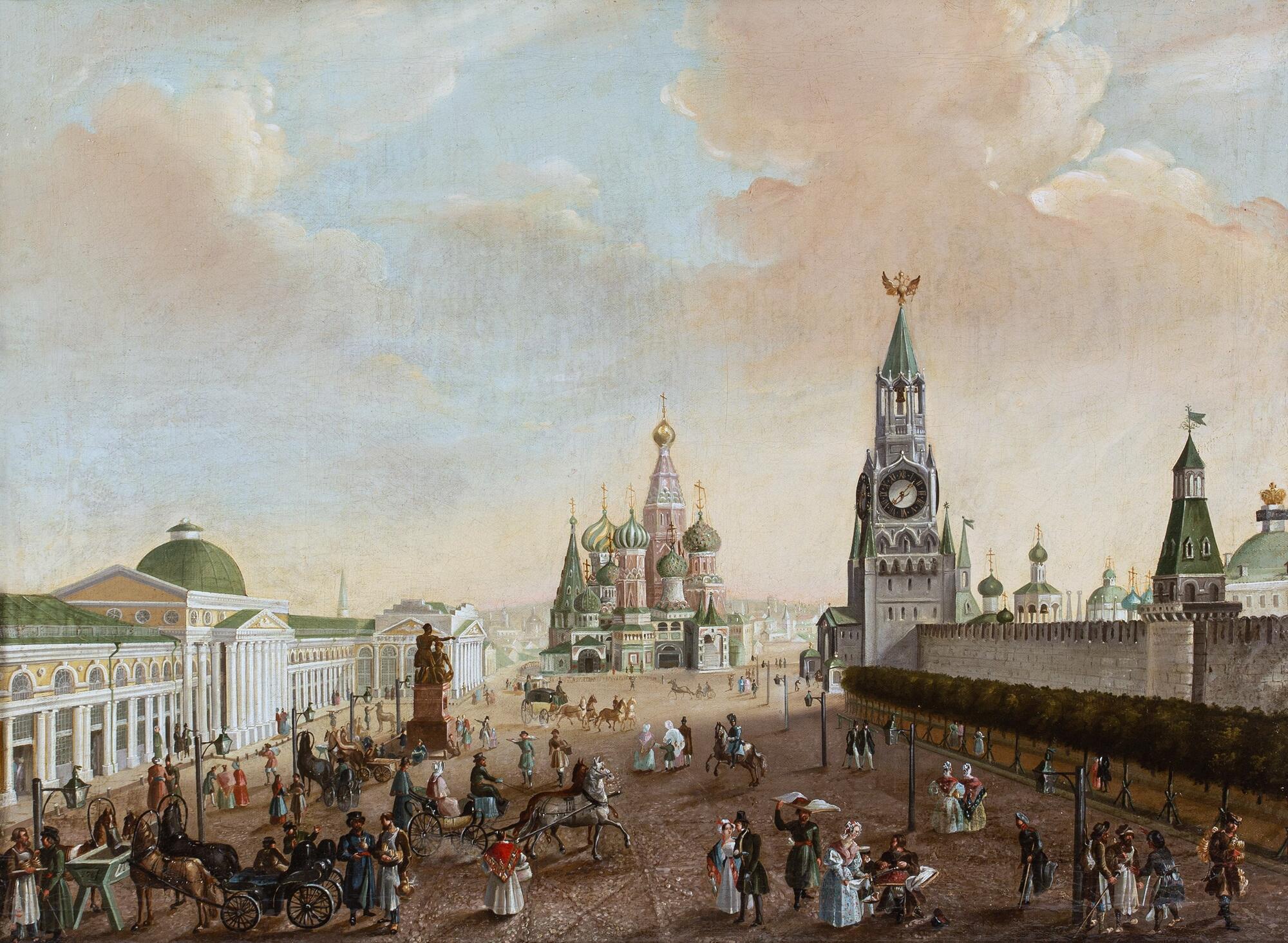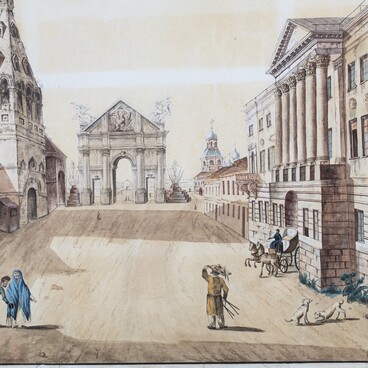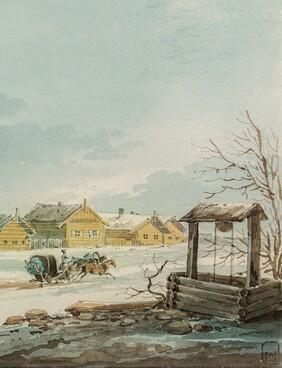Moscow. Red Square
Their look, though, shows no change upon it…
Moscow from Pushkin’s childhood amazed contemporaries with “a strange mixture of ancient and modern architecture, poverty and wealth, ” “sharp dichotomies in the characters and morals of the citizens.” Next to the magnificent palaces huddled miserable shacks of the poor; ancient monasteries and “palaces of the ancient boyars” stood near neoclassical buildings. In his childhood, Pushkin’s favorite pastime was walking around Moscow. Together with his serf, Nikita Kozlov, the future poet would go to the Kremlin, up a high twisted staircase. They climbed to the last tier of the Ivan the Great Bell Tower, from where the entire city was clearly visible. In the Kremlin and on Red Square, in Kitay-Gorod and on the outskirts of Moscow, in the walls of the ancient monasteries — the “watchmen” of Moscow — everything reminded of the harsh historic events filled with drama.
On September 8, 1826, by order of Nicholas I, Pushkin was taken from his exile in the estate of Mikhaylovskoye to Moscow, where he witnessed the coronation and festive celebrations. The first days and weeks of the poet’s return to Moscow were filled with new impressions: after many years of exile, Pushkin was happy to be free, to see old friends, to wander through familiar Moscow streets — some of them had already been rebuilt after the fire of 1812. Later, the poet remarked half-jokingly that “Moscow streets, thanks to 1812, are younger than Moscow beauties.”
In Moscow, Pushkin met his future wife, Natalia Goncharova. In December 1828, they met at a ball in the house of the Kologrivovs on Tverskoy Boulevard. A few months later, the poet proposed to her. Natalia’s mother did not give her consent for a long time, but three years later, on March 2, 1831, a wedding ceremony was held in the church at the Nikitsky Gate.

